Plains & Eastern Clean Line Dead?
January 24th, 2018
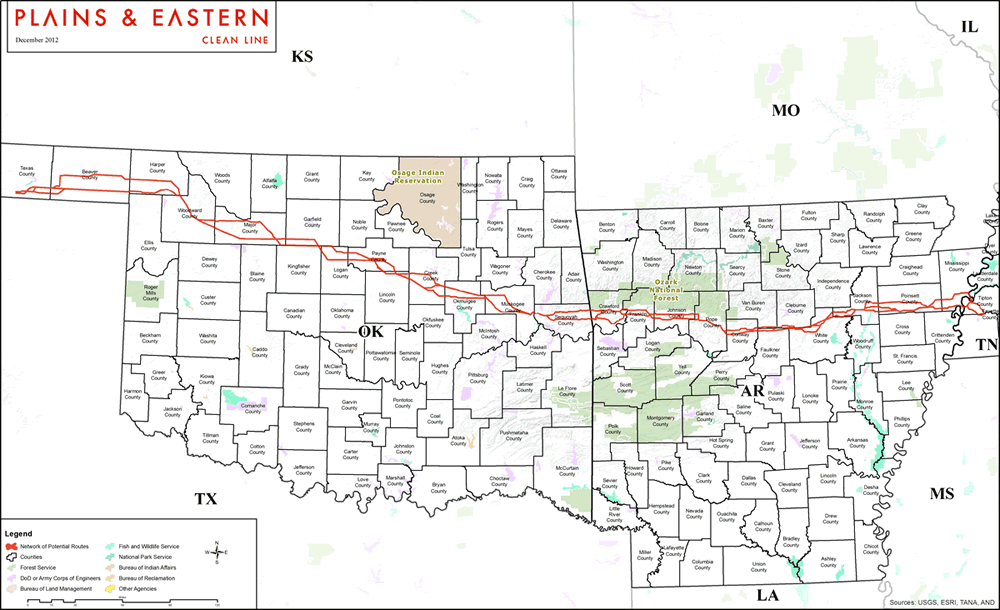
From Alison Milsaps and Dave Ulery, Block Plains and Eastern Clean Line:
To recap the events of recent weeks: Plains & Eastern, Clean Line’s regulatory crown jewel and the only of its projects to be fully (if questionably) permitted, is DEAD in Arkansas. Hallelujah. Don’t take our word for it, though. Let’s look at a little evidence:
Hubris: Clean Line’s Michael Skelly and the End of the Plains and Eastern Project…
You know, I love it when this happens.
Under the agreement, Clean Line Energy retains project assets east of Oklahoma, and NextEra Energy Resources owns only the project assets in Oklahoma.
Clean Line Energy added that the transaction will continue the project’s forward momentum and install a new sponsor to a transmission solution to the burgeoning wind sector in Oklahoma and the Southwest Power Pool.
A Clean Line Energy spokesperson on Dec. 22 told TransmissionHub of the deal, “We cannot disclose financial information.”
Clean Line Energy Partners, a Houston-based developer of five major transmission lines for wind-generated electricity, has dropped its interconnection agreement with TVA for one of its most promising projects after the federal utility declined to buy what Clean Line officials said would be cheaper and cleaner power for TVA…
… But after years of study, TVA said the Clean Line project didn’t make economic sense for the nation’s biggest government-owned utility, since TVA already has enough power-generating capacity and is on path to get more than half of its power from carbon-free sources. TVA President Bill Johnson said the intermittent nature of wind power would require TVA to build other backup power generators, including natural gas plants, that would offset the promised savings from the wind-generated power sources alone.
“We’re looking at a power demand in the future that is flat, or declining slightly, so we don’t anticipate needing major additions to power generation for a decade or more,” Johnson said.
“We all are wondering at this point” what is going on, said Julie Morton, of Van Buren. “We are disconnected on the western end now. The TVA was going to take 3,500 of the 4,000 megawatts it was going to generate, but now it is disconnected on that end.
“We are stuck in the middle, unplugged at both ends, and the only way out for us is if Clean Line completely implodes, which I think is happening, and the Department of Energy withdraws from the project.”
and now…
Using powers contained in the Energy Policy Act of 2005, the department moved the project forward over the objections of Arkansas leaders.
Among other things, the law would enable the use of eminent domain to obtain property from unwilling sellers.
But the participation agreement allows the department to back out of the deal if “the Commencement Date has not occurred by December 31, 2018.”
In the letter, delegation members urged Perry to “pause the Project to either study or terminate its participation before the deadline.”
Since it was unveiled, the power line project has generated controversy.
Arkansas lawmakers ask DOE to block Clean Line transmission project
Don’t know what more we could possibly need to show that this project is O. V. E. R. I do wonder if the appellate case was dismissed so there would be no precedent, and then, immediately after it was dismissed, all this happens. Then, if they or someone else wants to try a Section 1222 project, the door remains open????
Hearing on Minot Load Delivery Transmission Project
August 18th, 2017

Today was the hearing on Xcel Energy’s Minot Load Serving Transmission Project, or McHenry-Magic City 230 kV Transmission Line Project.
PSC hears NSP’s plan to upgrade transmission line to Minot
I got a Google Alert on this project, and it’s just a short jaunt from the Ft. Stevenson State Park (no relation to Xcel’s Grant Stevenson, I believe), so it seemed a lot more exciting than a tour of the Garrison Dam (I mean, yawn, we toured the Ft. Peck Dam last year and a dam’s a dam!). Last night was a rough night in the ol’ campground, highest winds I’ve ever experienced, and I thought the roof might collapse. Not a drop of rain, but the wind was so high, and lightning and thunder just a bit to the north. Everything blew around and I had to get up and get out and get everything in. Whew, it’s tired out…

Here’s the project:

The Route Application, at issue in this hearing:
Consolidated Application for Certificate of Corridor Compatibility, Route Permit, Waiver
And the CPCN Application, which has been issued:
Application for Certificate of Public Convenience and Necessity
This hearing yesterday was about not just Xcel’s application, but also its request for a waiver, wanting to rush it through. That was the major point that made no sense. This project was the result of a study that is Appendix A in the above Application for Certificate of Public Convenience and Necessity, and a Supplement that is Appendix B. It was dated 3/27, 2015, which is 2.5 years ago! Why the hurry? It’s also in MISO’s MTEP 15. The CPCN application wasn’t filed until September, 2016, by Pam Rasmussen. Again, what’s the hurry? That wasn’t answered. Xcel’s Tom Hilstrom said that he was responsible for the application, and that there were things that changed, but ??? Granted, “Hilly” probably wasn’t at Xcel for some of the time in question, Pam Rasmussen could have filed it, anyone could have, but it wasn’t. So it’s not really so urgent, eh?
The “need” for this project, and this project alone, wasn’t established. Commissioner Fedorchak had a number of questions about need, acknowledging that the CPCN proceeding came before, was already decided, but she wanted more info on need. However, when I raised issues about “what’s the hurry” and “need” and urged them to consider generation in Minot, such as natural gas generation, solar installed on the excess 40 acres of substation land purchased that isn’t necessary for the substation, and that all the recommendations of the study should be addressed, not just this one. I also asked that they take into consideration the unspecified GRE project connected (after all, this is transmission, it’s all connected, and another Commissioner had questions about Xcel’s agreements with the other transmission owners, particularly GRE, owner of the McHenry substation). Fedorchak apparently wasn’t too happy and wanted to make sure I knew need had already been decided. Ummmmm, raising issues similar to the ones she raised… hmmmmm. And she very pointed asked, “And what’s YOUR interest in this project?” I’d disclosed that at the beginning, no dog in the fight, camping nearby, got notice, and so looked into it. That’s called public participation.

What’s more odd is that there were only two of us who commented on the project. The other speaker was from the North Prairie Town Board, which had worked out an agreement with Xcel to follow quarter section lines rather than cut cross country diagonally, as the existing line does. Kudos to the town board!!!
The study has a number of changes recommended, and the transformer at McHenry substation is the limiting factor. Also, given that this is two lines on one structure, that’s regarded by NERC as one element, not two, and therefore not technically a reliability boost!

And about that McHenry transformer… where’s that? And it seems that the “rebuild both Ward County-Souris 115kV lines should be a top priority.
The good news? North Dakota has some interesting notions, like that those testifying should be reminded of “perjury” and that they swear or affirm that their testimony is true, both utility witnesses and the public (there was no staff testimony). Second is that the Commissioners go to the hearings! What a concept! Commissioner Christmann, responding to my testimony, wanted me to note how exceptional it is that the Commissioners were there, but it’s not ONLY North Dakota. That’s how it works in Wisconsin too, except in WI, it’s only the public hearings, and not the evidentiary hearings, although there is usually one commissioner present, and/or commissioners’ staff, to monitor. I had a short chat with Commissioner Kroshus, who came up and introduced himself, in a break, prior to my testimony,and I was clear, FULL DISCLOSURE, no dog in the fight, not representing anyone in this, and we talked some about differences in procedure, the ups and downs of our respective states.
Meanwhile… the office today, a perfect day in the shade at the Marina!
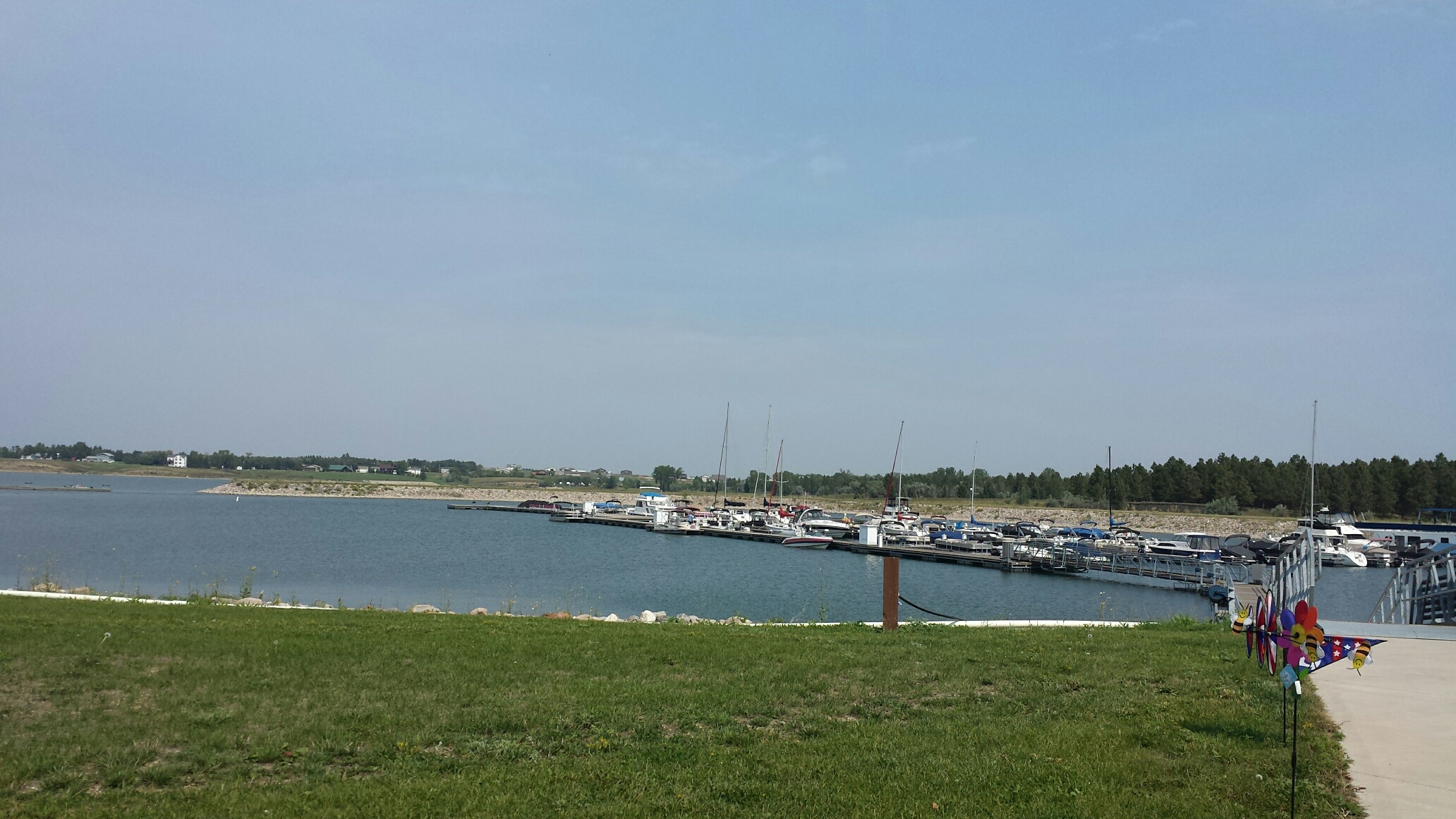
MISO’s MTEP 17 Draft!
August 8th, 2017

No, wait, that’s not right…

Yeah, that’s it… Midcontinent Independent System Operator, MISO, has released the draft MISO Transmission Expansion Planning report, or MTEP 17. From the MISO MTEP17 page, here are the live links:
MTEP17 Reports
Full Report
Executive Summary
Book 1 – Transmission Studies
Book 2 – Resource Adequacy
Book 3 – Policy Landscape
Book 4 – Regional Energy Information
Appendix AB
Appendix D1 Central
Appendix D1 East
Appendix D1 South
Appendix D1 West
Appendix D2 Projects In models Documentation
E1 Reliability Planning Methodology
Appendix E2 EGEAS Assumptions
MTEP17 Appendix A1 A2 A3
MTEP17 Appendix F Substantive Comments
Also from MISO’s MTEP page:
Transmission Planning Status Reports
Generation Retirement Sensitivity Analysis – Scope
Generation Retirement Sensitivity Analysis – Scope Appendix 1
And the most important one that shows what they’re up to in transmission planning, the link, and just in case it disappears, the spreadsheet:
MTEP17 Active Project List
And supposedly they’re taking comments from “stakeholders,” so says the MISO email announcement:
Please send any feedback on this report to David Lucian (dlucian@misoenergy.org) by August 25, 2017. Stakeholders will have an additional opportunity to provide feedback when the second draft of MTEP17 is posted on September 18, 2017. A list of report milestones is provided below.
| Item | MTEP17 Schedule |
| MISO posts first draft for external review | August 10 |
| Stakeholder review and comments | August 25 |
| MISO posts 2nd draft | Sept 18 |
| MISO System Planning Committee | Sept 19 |
| PAC – Report Review | Sept 27 |
| Substantive Comments Deadline | Oct 2 |
| PAC – Report update | Oct 18 |
| PAC motion | Oct 18 |
| MISO System Planning Committee – November | Nov 16 |
| MISO Board of Directors meeting | Dec 7 |
Transmission CCN? NO!!! A win for Neighbors United!
March 28th, 2017

Hot off the press from the Federal Appellate Court — Missouri Western District
From the Order:
ATXI is an Illinois corporation authorized to do business in Missouri and engaged in the construction, ownership, and operation of interstate transmission lines that transmit electricity for the public use. It does not generate, distribute, or sell electricity to the general public or serve any retail service territory.
And the law is clear:
“If any of the items required under this rule are unavailable at the time the application is filed, they shall be furnished prior to the granting of the authority sought.” 4 CSR 240-3.105(2) (emphasis added).
And interpretation of the law:
The general language of section 393.170.3 authorizes the PSC to impose “reasonable and necessary” conditions on a CCN. However, the specific language of section 393.170.2 states that evidence of the county commission consents “shall” be on file before the PSC grants a CCN. “Where one provision of a statute contains general language and another provision in the same statute contains more specific language, the general language should give way to the specific.” Id.
And bottom line?
The PSC’s Report and Order is vacated as it was entered in excess of the PSC’s statutory authority.
Love it when this happens!
Xcel Energy’s Peak Demand – nowhere’s near 2007
February 27th, 2017
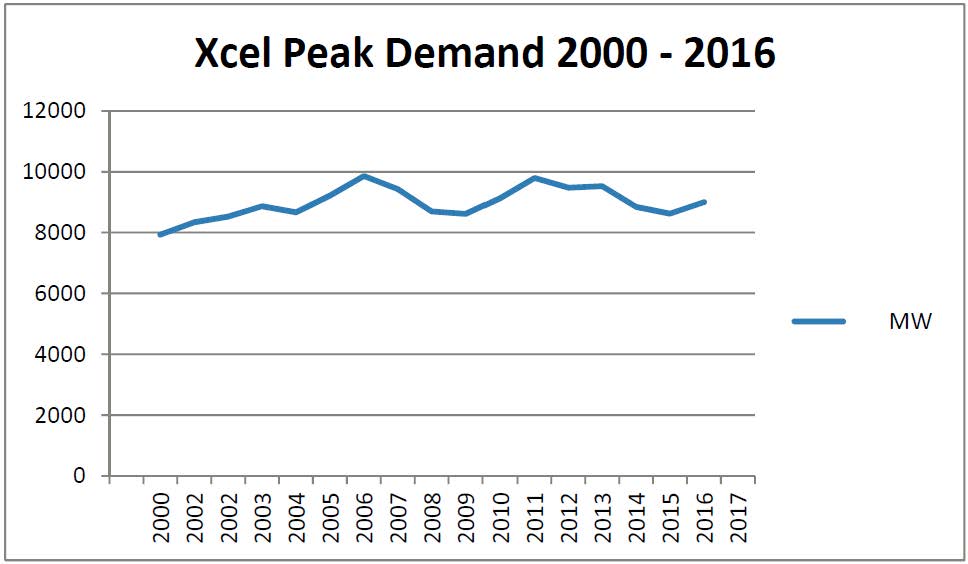
Xcel Energy has released its 2016 SEC 10-K, and here is the number I care most about, the peak demand, incorporated into the chart above:
![]()
“Peak Demand” is the number they use to attempt to justify “need” for all sorts of abhorrent and expensive infrastructure, particularly infrastructure of the transmission variety. Here are the specifics in megawatts (MW):
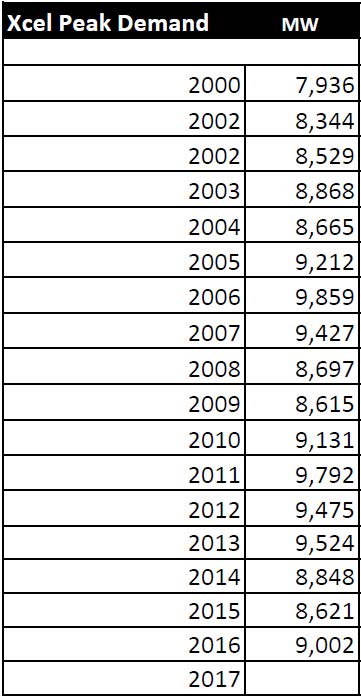
As Xcel Energy’s Ben Fowkes says, this is the “new normal.” From the Seeking Alpha transcript of the XEL Earnings Call, January 31, 2013.
Hence, they’re looking for other ways to make money, which they found in transmission, specifically CapX 2020 transmission, which was justified with this chart from MN Dept. of Commerce’s Steve Rakow, in his bar napkin depiction of the ups and down of peak demand:
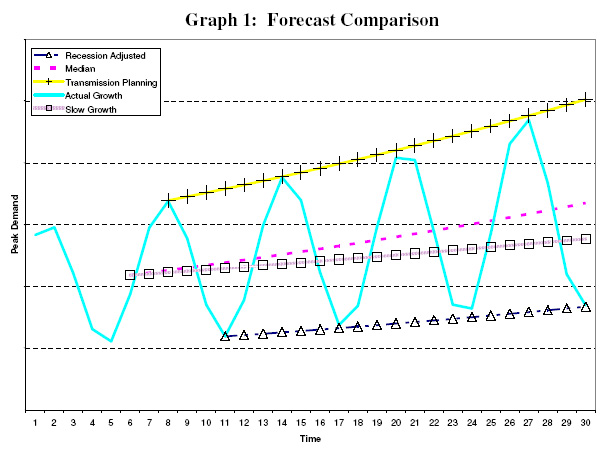
Compare this drunken-dream drawing with the actual peak demand above — doesn’t look at all similar, does it. Nevertheless, we’ve been stuck with over $2 billion in transmission infrastructure build-out which we’re just starting to pay for, and just starting to see show up in rate cases. People are just now starting to get a feel for the economic impact, as if the environmental and quality-of-life impact isn’t bad enough…


Meanwhile, after going through years and years over CapX 2020, followed by the MISO MVP 17 project portfolio, now under construction, MISO wants to spring another bunch of projects on us. Their “Transmission Overlay.” Yeah, right…
Here’s the list, in a spreadsheet:
This is the MN, WI, SD, ND and some IA wish list weeded out from that spreadsheet (click for a larger version):
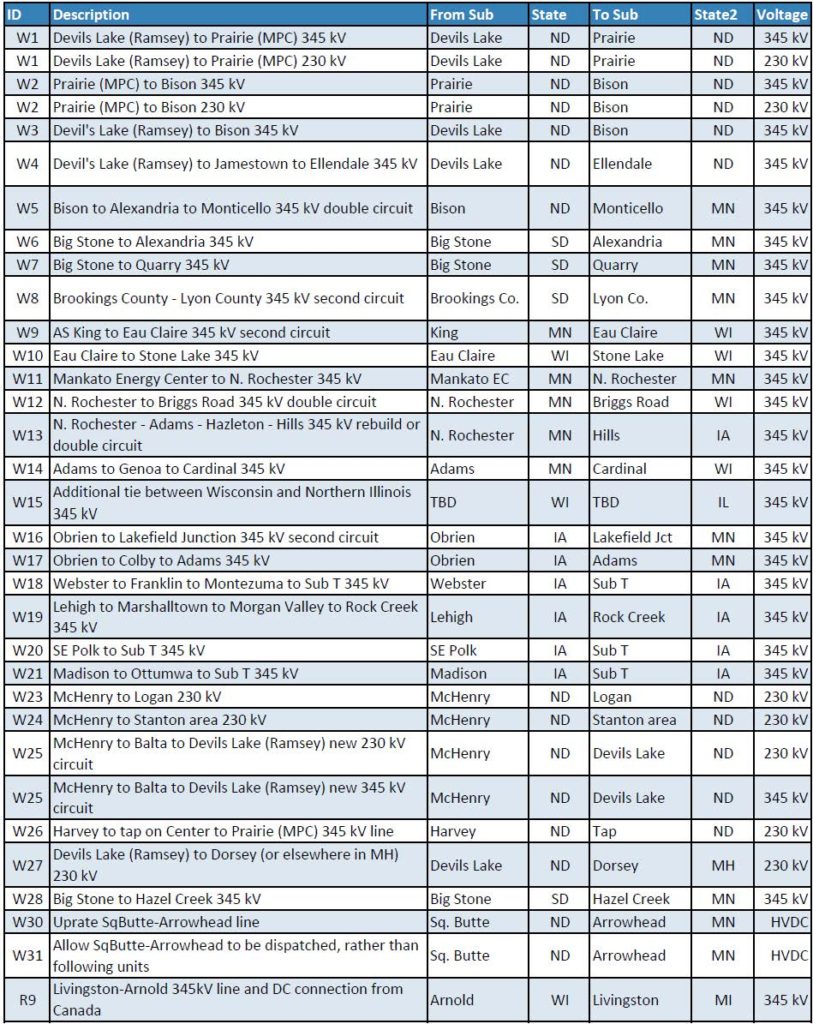
They want to add all of this, nevermind that Xcel is whining in its e21_Initiative that only 55% of the grid is not utilized:
(N) Identify and develop opportunities to reduce customer costs by improving overall grid efficiency. In Minnesota, the total electric system utilization is approximately 55 percent (average demand divided by peak demand), thus providing an opportunity to reduce system costs by better utilizing existing system assets (e.g., generation, wires, etc.). (e21_Initiative_Phase_I_Report, p. 11).
And they want to build more? MORE?!?!
And they want to ram it through even though it’s not needed, just like CapX 2020 transmission? As if Obama’s RRTT wasn’t enough, pushing CapX 2020 Hampton-La Crosse transmission line:
Obama “fast tracks” CapX Hampton-LaCrosse?!?!?!
… check out tRump’s Executive Order 13766:
Expediting Environmental Reviews and Approvals for High Priority Infrastructure Projects
GRRRRRRRRRRRR! As if there’s not enough work to do these days… but you know, the work never ends for us “paid protesters.” And a woman’s work is never done either.